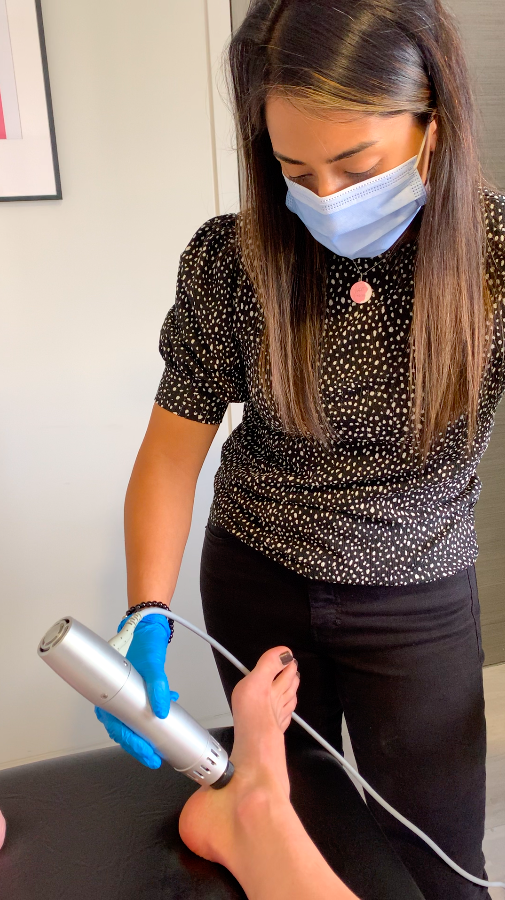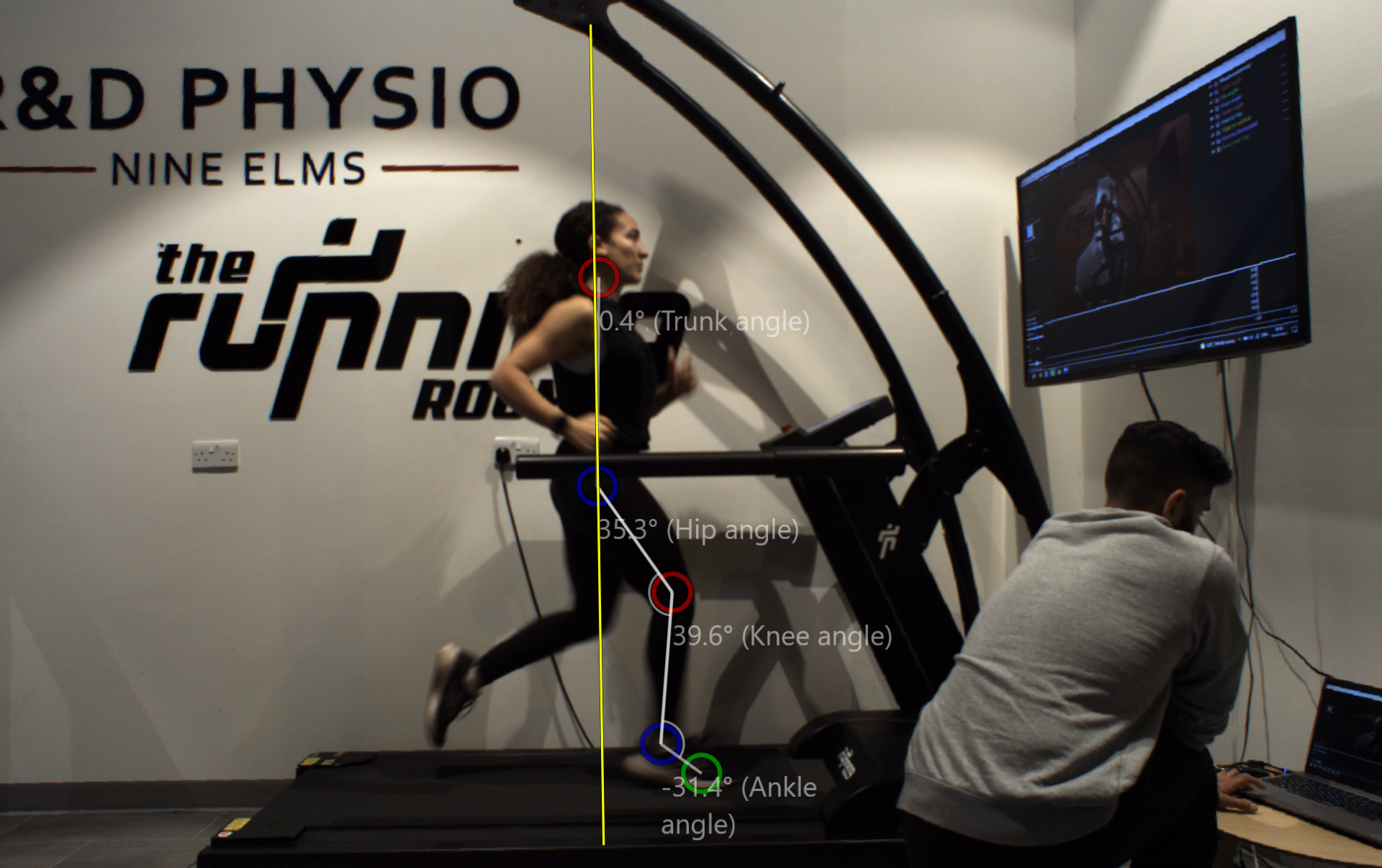5 tried and tested tendinopathy treatments that work
Two sufferers attempt to heal their exercise-induced tendinitis and tendinopathy.
Tendinopathy – previously known as tendonitis – is responsible for half of all sporting injuries. That means that if you’ve not had a case of aching or painful tissue, you’re one of the lucky ones.
Given that there are over 600 tendons spread throughout our body, the pain can be found pretty much anywhere. However, it’s most common in the rotator cuff (the shoulder socket), wrist extensors and pronators (the forearm), patellar (in the knee joint) and Achilles tendon (along the heel). Causes of the injury are relatively unknown, though one of the common beliefs is that overuse can cause the tissue to ‘degenerate’, according to research in the British Medical Journal.
You may also like
Ankle injuries: how to prevent and support ankle pain, including tendonitis and sprains
Two people who know only too well about this pain are the Strong Women team’s Miranda Larbi and Chloe Gray. They have both dealt with cases of tendinopathy for years, Larbi in her Achilles tendons, which first fired up back in 2016 and came back with a vengeance towards the end of 2020. For Gray, the irritation came up at the beginning of January 2020 – probably from a combination of overtraining and high heels during party season – in her tibia posterior (inner ankle). At the time, it got worse and worse until she ended up on a crutch for two weeks, and it now rears its achy head whenever it can.
Full recovery from the injury may be a waiting game, but there now also exists a whole host of treatments and advice that are designed to help healing. The Strong team took it upon themselves to test them out and, after many months of pain, here are five things that worked.
Tendinopathy treatments
Shockwave therapy – Chloe Gray
I’ve long seen osteopath Anisha Joshi for my back, but it wasn’t until a recent flare up of tendinopathy in my ankle that I knew she could work wonders on my tendonitis, too. The tendinopathy came in September, after a weekend of moving, lugging boxes with awful technique, I woke up barely able to put weight through my foot.

When Joshi recommended shockwave for me, I was trepidatious. I do truly believe that trigger point release, massage and osteopathy work wonders, but when it comes to waves? I wasn’t sure.
“Shockwave therapy uses audible sound waves that are non-invasive (aka non-surgical). It works by increasing the blood flow to the inflamed tendons and triggering cell regeneration to heal the body,” explains Joshi.
My treatment was done at her clinic, Osteoallies, over a course of three treatments with herself and practitioner Payal Patel. To the naked eye, the shockwave instrument looks like a massive pen, and the ball vibrates along the body to send the waves into the tissue. The area it is applied on dictates the pain: along the squishy heel, it felt absolutely fine, but when it tapped along the bone in my ankle, it was agonising.
You may also like
Running exercises: 5 core exercises every runner needs to do to stay injury-free
The 10-minutes of pain has surely been worth it, given that after just one course of the treatment, I felt better. After the initial numbness in my ankle had worn off, the whole area felt looser. “One of the benefits of deep tissue treatment like shockwave is that it works rapidly,” says Joshi. Research also shows this is the case: a 2018 review found that improvements in pain happened immediately after therapy and were maintained in most participants for up to a year.
The added benefit of having an osteopath apply shockwave therapy is that they do it in conjunction with their understanding of the rest of the body. Joshi and Patel eased off my tight calves and hips to improve my gait, which I have no doubt took a lot of the pressure off of my ankle to improve symptoms.
Physiotherapy – Miranda Larbi
I’ve been in and out of physiotherapy for the past seven or so years – ever since I started running properly. Initially it was for a baker’s cyst behind my left knee which was shock-therapied away, and again at the start of this recent tendon trouble.
My Achilles have been agony for over a year, so about six weeks before the London Marathon (great timing, I know!), I decided to bite the bullet and invest in finding a solution by getting assessed at LDN Physios. Within a few minutes, I was diagnosed with non-rheumatoid tendinopathy (ie exercise-induced as opposed to chronic inflammation)… again.
The physio’s recommendation was to “get through the race” by investing seriously in rehab then and afterwards. He recommended trying to do umpteen variations of heel lifts and toe-taps to get the calves firing up – starting by standing on the edge of a stair and going up on tip toes and slowly lowering the heels below the step.
For six weeks, I brushed my teeth while doing heel raises on the bathroom step and began every run with a warm-up focused on calf activation. The result? My calves and Achilles definitely felt less tight.
Insoles – Chloe Gray
I’ve always had exceptionally high arches and after a lot of trial and error, found some comfort in arch support insoles that I slipped into my shoes on long walks. I always knew they didn’t quite offer me the full support I needed, but they did allow me to walk for more than 20 minutes without searing pain. Yet any high-intensity training or longer-than-normal walk left me with an aggravated ankle that often spread up into shin splints. I wanted prevention, as well as cure.
I booked in for an appointment with Christophe Champs, founder of podiatry clinic Podo. Overlooking the role our feet play is a common mistake, he says: “A quarter of the skeleton sits in your shoes. Complaining about shin splints, Achilles pain and problems with the tibia posterior is a sign that all those big tissues that are responsible for holding your body and upright back have been overused.”

Of course, he was right. In my assessment, I walked over a scanner that took a diagram of the weight distribution in my feet when I step. It turned out that, because my arches are so high, I don’t use any of my mid-sole when I walk, and instead put all the weight through my toes. Champs explained that meant the ligaments in the back of my foot have to work extra hard to pull me back. He fitted me with orthotic insoles that slot into almost any shoe to offer support under my arch.
“The orthotics actually mould to your arches to sustain the foot to stop pulling on this tendon. Having arch support also means you re-posture your body to be more upright and it means that the ankle doesn’t have to work as hard to push you back.”
I binned my floppy arch supports and put the insoles to the test on the Strong Women Trek. As I stepped out of bed the next day, dreading the pain my ankle and calves were about to be in, I was shocked. There was nothing wrong with me, despite walking 12 miles. Now, I put them in every single shoe that I own, even expensive trainers that claim arch support, and I am yet to feel the dull splinter start to spread around my foot.
Massage – Miranda Larbi
Anyone who thinks massage is a relaxing experience clearly hasn’t had a sports massage. You end up trying not to scream into the mat as someone digs their elbows into your tight areas and then have to somehow limp away at the end of the hour.
In a desperate attempt to calm the pain, I booked a sports session with a therapist from Urban Massage. She rubbed, mobilised, stretched and lengthened just about every part of me, before asking if I had any calf or tendon issues (I hadn’t told her before). Immediately, she said she’d noticed how much tighter my right leg was and how although I had very muscular glutes, hamstrings and quads, my calves were relatively weak. “You’re like a triangle,” she said as she left, leaving me with yet more incentive to work on my calf strength.
This time, however, I didn’t limp away at the end. I positively floated around the house. The full effects only lasted a few days but it was enough to convince me that I needed to loosen off tight muscles more regularly with massage and that strength training had to happen.
Lowering the load – Miranda Larbi

After 18 months of running a lot (two marathon cycles), it was no wonder that my tendinopathy was worse than ever. Physio had definitely helped but I still found myself barely able to walk to the loo in the morning for fear that my Achilles would snap.
Then, something bizarre happened: it all suddenly went away. Almost overnight, the pain and stiffness stopped a week before the London Marathon. I’d been in such pain that I was starting to contemplate pulling out of the race and yet, as I warmed up at the start line, I couldn’t feel any of the issues I’d been affected by just weeks ahead. For 26.2 miles, I ran pain-free (or as pain-free as you can after three hours of running).
When I put this curious fact to Adrian D’Costa, physiotherapist and director of The Running Room at R&D Physio, he said it was simple: “In the weeks before the marathon, your load went down as you tapered. If you’ve been running a lot for months, just having that break will have allowed your body to recover.”
Since the marathon, my load has reduced massively. I now run about 15-20km a week, opposed to 40-50km and my tendinopathy hasn’t really flared. That can’t be a coincidence.
Images: Pexels / Chloe Gray
Source: Read Full Article
